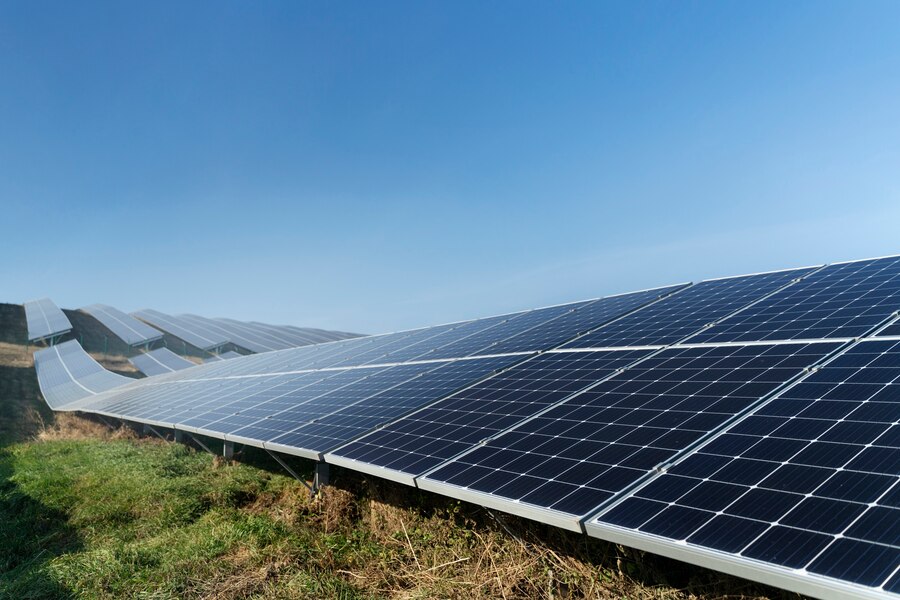
How On-Grid Solar System Works in Pakistan?
In recent years, Pakistan has been experiencing a significant shift towards renewable energy sources, particularly solar power. The energy crisis in the country has made people’s lives miserable and challenging. To overcome these challenges, shifting to alternative energy sources has become a popular solution for those affected. Solar power is one of the most commonly adopted and widespread solutions. You can also have your solar power plant installed by DSG Energy.
Among the various solar solutions, on-grid solar systems have emerged as a popular choice for homeowners, businesses, and industries alike. In this article, we’ll delve into the workings of on-grid solar systems in Pakistan, exploring their benefits, components, installation process, and the regulatory framework governing their implementation.
Introduction to On-Grid Solar Systems
On-grid solar systems, also known as grid-tied or grid-connected systems, are designed to work in tandem with the existing utility grid infrastructure. Unlike off-grid systems, which operate independently, on-grid systems feed excess electricity generated from solar panels back into the grid. This integration allows users to get benefit from both solar power and conventional grid electricity, ensuring a reliable and cost-effective energy supply.
How On-Grid Solar Systems Work
The functioning of on-grid solar systems can be understood through several key components:
Solar Panels:
The primary component of any solar system, solar panels consist of photovoltaic cells that convert sunlight into electricity through the photovoltaic effect.
Inverter:
An inverter is essential for converting the direct current (DC) electricity generated by solar panels into alternating current (AC) electricity, which is compatible with the utility grid and household appliances.
Net Metering System:
A crucial aspect of on-grid systems, net metering allows users to measure the difference between the electricity consumed from the grid and the electricity generated by their solar panels. Excess electricity generated during sunny periods is fed back into the grid, while electricity is drawn from the grid during periods of low solar generation.
Utility Grid Connection:
On-grid systems are connected to the local utility grid, enabling seamless exchange of electricity between the solar system and the grid.
Benefits of On-Grid Solar Systems in Pakistan
On-grid solar systems offer numerous advantages for homeowners, businesses, and the environment:
Cost Savings:
By generating their electricity, users can significantly reduce their electricity bills, especially considering the abundant sunlight available in Pakistan.
Return on Investment (ROI):
On-grid systems provide a tangible ROI as users can benefit from net metering credits for the excess electricity they feed into the grid.
Environmental Impact:
By harnessing solar power, users contribute to reducing greenhouse gas emissions and dependence on fossil fuels, thus mitigating environmental degradation.
Grid Stability:
On-grid systems enhance the stability and reliability of the electricity grid by diversifying the energy sources and reducing peak demand.
Installation Process of On-Grid Solar Systems
In Pakistan, installing an off-grid solar system normally entails the following actions:
Site study: A skilled solar installer conducts a detailed study of the site to establish its solar potential, considering aspects such as sunshine exposure, shade, and roof orientation.
System Design:
The installer creates a personalized solar system based on the site evaluation, taking into account the user’s energy requirements and financial limitations.
Authorizations and Grants:
It is imperative to obtain the required permits and approvals from utility providers and municipal authorities before to initiating the installation process. By taking this action, clients are less likely to experience any difficulties. For a hassle-free solar power plant installation, you can rely on DSG Energy.
Installation:
Qualified specialists install mounting frameworks, inverters, solar panels, and other parts.
Commissioning and Testing:
To guarantee peak performance and adherence to safety regulations, the system is put through a thorough testing and commissioning process.
Monitoring and upkeep:
To extend the life and maximize the effectiveness of the on-grid solar system, routine monitoring and upkeep are essential. This include maintaining panel cleanliness, examining electrical connections, and resolving any potential problems. DSG is at the forefront of providing 24/7 monitoring through its in-house Network Operating System (NOC). It is a one-of-a-kind monitoring system with unique features and a dashboard. So, contact DSG Energy today to initiate the process of your solar installation. You can also read comparison of On-Grid vs Off-Grid solar system to know which is beneficial for you.
Regulatory Framework for On-Grid Solar Systems in Pakistan
The deployment of on-grid solar systems in Pakistan is governed by various regulatory policies and incentives aimed at promoting renewable energy adoption. Key regulations include:
Net Metering Policy:
The Net Metering Regulations enable consumers to install solar systems and offset their electricity bills by exporting surplus electricity to the grid.
Feed-in Tariff (FiT) Programs:
FiT programs offer incentives such as guaranteed purchase prices for solar-generated electricity, encouraging investment in solar power projects.
Renewable Energy Policy:
Pakistan’s Renewable Energy Policy aims to diversify the energy mix by promoting renewable energy sources, including solar, wind, and hydropower.
Conclusion
On-grid solar systems are a smart and eco-friendly way to meet Pakistan’s growing energy needs while reducing our reliance on old-fashioned fossil fuels. By tapping into Pakistan’s abundant sunshine, these systems offer great benefits like saving money, being kind to the environment, and keeping the power grid stable. Thanks to supportive rules and better technology, more and more people are choosing on-grid solar. It’s a win-win, helping Pakistan move towards cleaner, more sustainable energy for the future.


